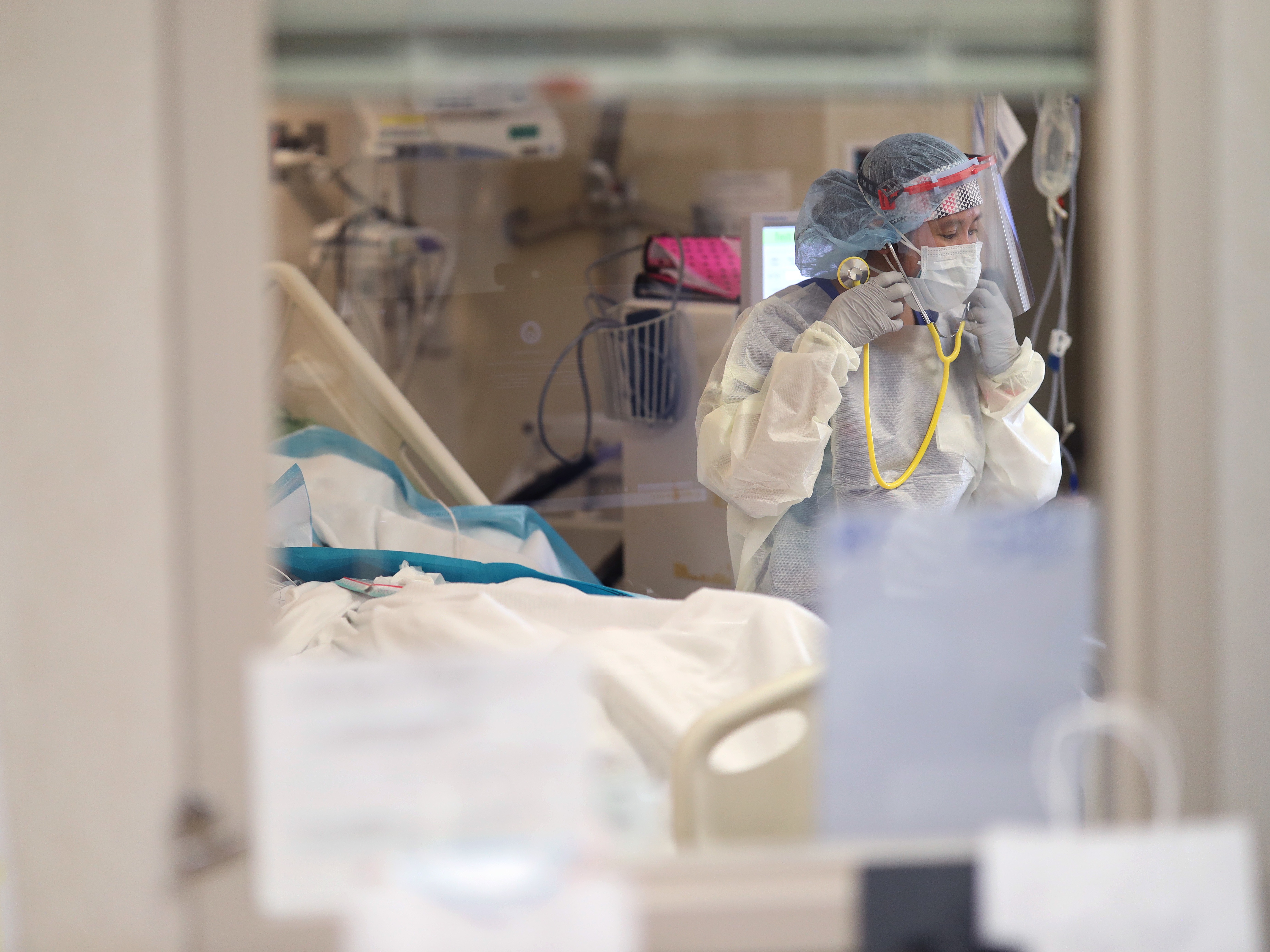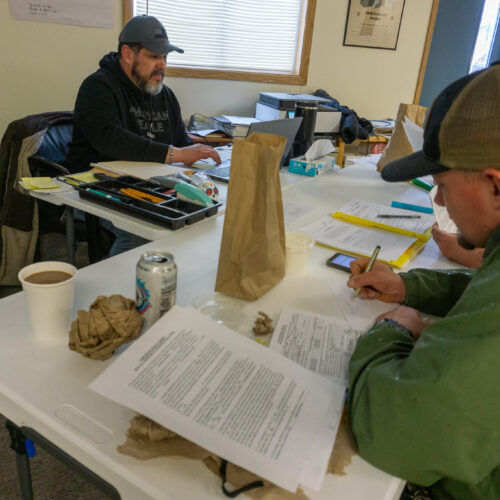
Antibiotic Use Ran High In Early Days Of COVID-19, Despite Viral Cause
LISTEN
BY RICHARD HARRIS
Doctors treating COVID-19 patients early in the pandemic often reached for antibiotics. But those drugs were not helpful in most cases, and overuse of antibiotics is a serious concern.
Several research groups, at Johns Hopkins, the University of Michigan and Bristol, England, have observed this trend. Now researchers at the Pew Charitable Trusts have weighed in with more data and put those findings in the context of long-term worries about the fate of antibiotics.
The Centers for Disease Control and Prevention estimates that nearly 3 million Americans a year get an infection that’s caused by a drug-resistant microbe. An estimated 35,000 Americans die from these hard-to-treat infections annually.
As a result, hospitals are supposed to follow rules to limit unnecessary use of antibiotics. Overuse of these medications hastens the development of new drug-resistant strains of bacteria.

Early on in the COVID-19 pandemic antibiotics were frequently prescribed to seriously ill patients, even though the disease is caused by a virus. CREDIT: Win McNamee/Getty Images
But those rules haven’t been closely followed during the COVID-19 pandemic, particularly in its early days.
Here’s the scene doctors confronted. “You have a patient in front of you with this potentially lethal illness,” says Dr. Susan Swindells, an infectious diseases specialist at the University of Nebraska Medical Center. “They have a fever and a cough, and they have difficulty breathing. So, the overwhelming desire is to do whatever you can.”
In the absence of any effective drug therapy, that often meant reaching for antibiotics. Some patients got treated just in case that they actually had bacterial pneumonia, not COVID-19. Other times, doctors figured patients might have both COVID-19 and a bacterial infection. That double infection is fairly common among people hospitalized with influenza.
Back then, she says, “there was very little proven treatment for COVID so people were trying all kinds of things.”
“I think we are all aware of some overuse in COVID,” she said. And it’s hardly unique. “Lots of people with flu or even common colds get prescribed antibiotics when they don’t need them. It’s definitely an issue.”
Rachel Zetts at the Pew Charitable Trusts documents the use of antibiotics for COVID-19. The study in a group of about 5,000 hospitalized patients, chiefly in the Midwest, found that more than half were given antibiotics, even though most of them did not have bacterial infections.
Patients usually got the antibiotics right away, before doctors had time to run tests to rule out bacterial infections.
Doing that is “not inherently a bad practice,” says Zetts’ co-author, Dr. David Hyun at Pew. “It’s a necessary tool for providers to treat patients with suspected bacterial infections when they hit the doors of the hospital.”
Immediate treatment can save the life of someone with a sepsis, for example. That’s triggered by a bacterial infection.
But as the pandemic evolved, it became increasingly clear that antibiotics weren’t helping most COVID-19 patients.
Doctors usually discontinued therapy within a few days once they realized their patients wouldn’t benefit, their study found. Even so, this practice contributes to overuse of antibiotics and can gradually erode their potency. Hyun says hospitals had in recent years been compelled to adopt guidelines to rein in inappropriate antibiotic use.
“What we’re concerned is that the progresses we’ve seen in the last few years could reverse.”
The studies to date apply mostly to medial practices used in the first six months of the pandemic. Since then, doctors have had effective drugs to reach for, and have learned that their patients rarely get secondary bacterial infections.
Swindells says in her hospital, that’s reduced the impulse to reach for antibiotics.
“It’s still going on to a certain extent, but improved,” she says.
Those lessons have likely been learned in most places where COVID-19 is treated. The researchers at Pew are eager to see results from follow-up studies, to see if that is indeed the case.
You can contact NPR Science Correspondent Richard Harris at rharris@npr.org.
9(MDAyOTk4OTc0MDEyNzcxNDIzMTZjM2E3Zg004))















